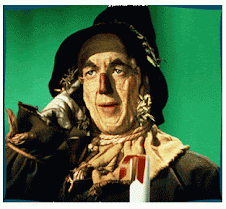
There are a couple of factors to keep in mind when preparing for a job interview. First of all, you have to look good, and you also need to do a little preparation. You can usually look up standard interview questions on the net and find what the ideal answers are, then tailor your own experience accordingly.
The biggest key however, is one of the best kept secrets in interviewing. Here it is. Most interviewers don't know how to interview. This leaves you in a tremendously advantageous position if you know how to be interviewed! This might be an oversimplification, but basically you have 2 types of interviewers (with the exception of group interviews, panel interviews etc).
You have talkers, and you have listeners.
The listener will generally have a sheet of about 20 company issued questions to ask you. They will spend half of their time if not more staring at this sheet, clearing their throat before asking you a question, and occassionally offering a very nervous chuckle if you've said something amusing. With a listener you want to do a lot of talking. Talk about your birds, your cats, your kids, ask about their family, pets, education, personal background. The listener is waiting for you to fill in the gaps, and the listener finds the gaps incredibly awkward. You have to ease that for them.
You have to build a rapport, and that generally depends on finding some common ground. This again comes back to asking a lot of questions about them. The things that people generally enjoy talking about are their family and or pets, their hobbies, their work, their vacations, and with some, their heritage. Here's an example. I had an interviewer by the name of Bruce Patterson. He was a little nervous running me through a presentation on his company's computer system. At a lull in the presentation I asked him if he was Scottish by any chance. (Even with no clues there is about a 1-5chance that the average Canadian has some Scottish Heritage, and with a name like Bruce Patterson those odds go up to about 100%). He was of course, and after a brief dialogue about being Scottish he actually shut down the presentation and navigated to a family website where we talked about coats of arms and heraldic crests for the rest of our time. Needless to say I got the job. I had put the listener at ease by finding a topic of common ground that he was enthused about.
The other type of interviewer you will encounter is the talker. Here your approach should be entirely the opposite. Talkers love to hear themselves talk. Your best tactic is to engage in active listening, leaning forward, engaging them in an attentive manner, smiling and nodding a lot, and simply letting them talk themselves into hiring you. TRUST ME on this one. I know it sounds crazy, but 3 of the best jobs that I've ever had I landed with this technique. Ironically, you tend to meet this type of interviewer most often when applying for sales or people oriented positions. I have had hour long interviews with this type of person in which I picked up pretty fast that they loved to talk (you will too now that you know what to look for), and have seriously uttered no more than 4 or 5 sentences yet landed the job.
A talker will become frustrated if you try to talk over him, if you interrupt his or her flow. They quickly lose their train of thought when interrupted and struggle to find the momentum again. They will provide you with opportunities to answer specific questions, but often times they won't ask any questions at all. Your job is to listen, try to determine what they believe the key hiring factors are, and in your closing statement as you leave their office, re-iterate that those are the qualities you possess.
In the past few days I've had 3 interviews, and I've landed 3 jobs. 2 of the jobs I'm not at all qualified for. As for the other, my spotted work history should have set off huge alarm bells in the interviewers mind. This technique works, because it caters not to the job in question, but to the interviewer. It makes the interviewer feel very positive about their own skills and acumen. I have never in my life been out of work unless I chose to be.
Give it a shot, just for fun, you'll be amazed.







